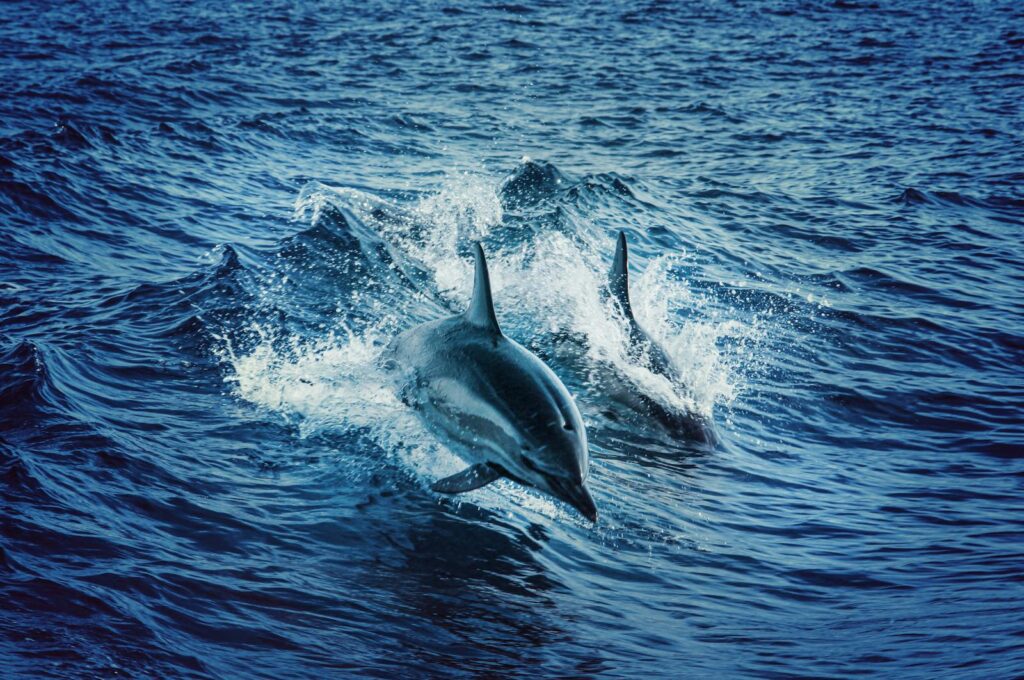Across our planet, billions of animals undertake remarkable journeys each year, navigating vast distances with astonishing precision. From the Arctic tern’s pole-to-pole marathon to the monarch butterfly’s multi-generational trek across North America, these migration patterns have long fascinated scientists and nature enthusiasts alike. While researchers once attributed these navigational feats primarily to visual landmarks, celestial cues, or olfactory signals, a more fundamental force has emerged as a critical factor in animal migration: Earth’s magnetic field. This invisible yet pervasive force provides a global positioning system that many species can detect and interpret, allowing them to navigate across continents and oceans with remarkable accuracy. The relationship between magnetic fields and migration routes reveals one of nature’s most sophisticated adaptations and offers insights into how animals orient themselves in a complex world.
The Earth’s Magnetic Field as a Navigational Framework

Our planet generates a complex magnetic field that extends from the core into space, creating what scientists call the magnetosphere. This field varies in strength and direction across the Earth’s surface, effectively creating a global grid that remains relatively stable over time. For migratory animals, these predictable patterns offer reliable reference points that work regardless of weather conditions, time of day, or geographical barriers. Unlike visual landmarks that may change seasonally or celestial cues that require clear skies, the magnetic field provides constant navigational information. Studies have demonstrated that many species possess specialized cells containing magnetite or other magnetically sensitive compounds that function as internal compasses. This biological equipment allows creatures from tiny insects to massive marine mammals to detect subtle variations in magnetic field strength, inclination, and polarity, essentially reading the Earth’s magnetic signature like a map.
Magnetoreception: How Animals Sense Magnetic Fields

The ability to detect magnetic fields, known as magnetoreception, involves sophisticated biological mechanisms that scientists are still working to fully understand. Research has identified several potential pathways for this remarkable sense. One mechanism involves magnetite, a naturally magnetic mineral found in specific cells in many migratory animals. These microscopic magnetic particles physically rotate in response to the Earth’s magnetic field, triggering neural signals that the animal interprets as directional information. Another proposed mechanism involves light-sensitive proteins called cryptochromes, particularly in birds, which may use quantum effects to detect magnetic field orientation when activated by specific wavelengths of light. Some species appear to use both systems simultaneously, creating redundancy that ensures reliable navigation even if one system is compromised. The neurological processing of magnetic information represents one of the most remarkable and still mysterious sensory adaptations in the animal kingdom.
Birds: Masters of Magnetic Navigation

Among migratory animals, birds demonstrate some of the most sophisticated magnetic navigation abilities, with many species capable of extraordinary feats of orientation. European robins, for example, can determine their geographic position based solely on magnetic inclination and intensity, allowing them to correct their course even when displaced thousands of kilometers from their normal migration routes. Research has revealed that many bird species possess magnetoreceptors in their eyes, particularly in the right eye, connected to specific brain regions that process this magnetic information. This visual-magnetic system appears to overlay magnetic field information onto what the bird sees, creating a type of “magnetic map” in the bird’s perception. Night-migrating songbirds calibrate their magnetic compass at sunset, using the position of the sun to establish their directional reference before continuing their journey in darkness using magnetic cues. The combination of celestial and magnetic navigation systems gives birds remarkable navigational flexibility, enabling migrations that span continents with pinpoint accuracy.
Sea Turtles and Their Magnetic Imprinting

Sea turtles exhibit one of the most fascinating applications of magnetic navigation in their life cycle, using the Earth’s field for both their initial ocean-crossing journeys as hatchlings and their remarkable return to natal beaches decades later. When sea turtle hatchlings emerge from nests on beaches worldwide, they immediately begin a frantic scramble to the ocean, where they start a “swimming frenzy” that propels them into offshore currents. Research has shown that even as tiny hatchlings, they can detect magnetic field parameters and use this information to stay on course during their initial oceanic journey. More remarkably, sea turtles appear to imprint on the specific magnetic signature of their natal beach, creating a geomagnetic map that they can reference years later when returning to lay their own eggs. This magnetic imprinting explains how female turtles can return with extraordinary precision to the same beaches where they were born, even after spending decades traversing thousands of miles of seemingly featureless ocean waters.
Salmon’s Magnetic Memory of Home Waters

The epic migrations of salmon represent one of nature’s most well-known journeys, with fish traveling thousands of miles in the open ocean before returning to spawn in the exact freshwater streams where they were born. Research has revealed that magnetoreception plays a crucial role in this remarkable homing ability. Young salmon appear to imprint on the magnetic field coordinates of their natal rivers before heading to sea, creating a magnetic memory that serves as their primary navigational reference during return migration years later. Studies with sockeye salmon have demonstrated that they respond to magnetic fields matching those at crucial points in their migration route, suggesting they follow a series of magnetic waypoints during their oceanic journey. When approaching coastal waters, salmon then transition to using olfactory cues, essentially “smelling” their way up the correct river system to their spawning grounds. This sequential use of magnetic and chemical navigation showcases how different sensory systems can work in concert to guide complex migratory journeys.
Insects and Magnetic Migration

Despite their small size and seemingly simple nervous systems, many insects demonstrate sophisticated magnetic navigation abilities that enable remarkable migratory journeys. The monarch butterfly’s multi-generational migration between Mexico and Canada represents one of the most studied examples, with research confirming that these delicate insects can detect and use the Earth’s magnetic field for orientation. Experiments have shown that monarchs possess a time-compensated sun compass that works in conjunction with magnetic sensing, allowing them to maintain consistent directional headings even as the sun moves across the sky. Other migratory insects, including certain moths, dragonflies, and locusts, also appear to use magnetic information during their long-distance movements. The painted lady butterfly, which undertakes a multi-generational migration spanning Africa and Europe, can adjust its flight direction based on magnetic cues when visual references are unavailable. The fact that creatures with brains smaller than a pinhead can detect and navigate using Earth’s magnetic field underscores the evolutionary importance and efficiency of this navigational system.
Marine Mammals and Magnetic Navigation

The vast, featureless expanses of the open ocean present unique navigational challenges, yet marine mammals regularly traverse these environments with remarkable precision. Evidence suggests that whales, dolphins, and other marine mammals utilize the Earth’s magnetic field as a critical navigational aid during their migrations. Researchers have observed correlations between cetacean stranding locations and areas with magnetic anomalies, suggesting these animals may become disoriented when local magnetic signatures differ from expected patterns. The migration routes of gray whales along the North American coast appear to follow contours of magnetic intensity, effectively creating magnetic pathways in the ocean. Satellite tracking of various whale species reveals they can maintain surprisingly straight courses across thousands of miles of open ocean, a feat difficult to explain without some form of magnetic sensing. While visual, acoustic, and chemical cues certainly play roles in marine mammal navigation, the consistency and global nature of their migrations strongly suggest magnetic field detection serves as a fundamental navigational framework.
Magnetic Anomalies and Migration Disruption

The relationship between magnetic fields and migration becomes particularly evident when examining how magnetic anomalies can disrupt normal movement patterns. These anomalies—areas where the local magnetic field differs significantly from the expected background field due to geological features or human activities—can confuse magnetically sensitive animals, causing navigation errors or complete disorientation. Researchers have documented higher rates of whale and dolphin strandings near coastal regions with significant magnetic anomalies, suggesting these areas create navigational confusion similar to how electromagnetic interference might affect a compass. Bird migration patterns sometimes show unusual detours around major geological features that create magnetic anomalies, further supporting the critical role of magnetic navigation. In experimental settings, artificially created magnetic anomalies can cause migratory birds to adjust their orientation, with the strength of the anomaly correlating with the degree of directional change. These disruptions provide compelling evidence that many species rely heavily on magnetic information during migration and highlight the potential ecological impacts of human activities that generate artificial magnetic fields.
Human Impacts on Magnetic Navigation

As human technology increasingly fills our environment with artificial electromagnetic fields, concerns have emerged about potential impacts on magnetically navigating animals. Power lines, radio transmitters, radar installations, and other infrastructure generate electromagnetic fields that can potentially mask or interfere with the Earth’s natural magnetic signals. Research has shown that migratory birds can become disoriented when exposed to electromagnetic noise in certain frequency ranges, temporarily losing their ability to determine direction accurately. Marine installations like underwater cables emit localized magnetic fields that may affect sea turtle and fish navigation in coastal areas. Even common electronic devices like cell phones and wireless networks create weak but pervasive electromagnetic fields that could potentially impact sensitive species in urban environments. As human development continues to expand, understanding these electromagnetic impacts becomes increasingly important for conservation efforts focused on migratory species. Mitigating these effects may require creating electromagnetic “quiet zones” along crucial migration corridors or developing technology that minimizes interference with natural magnetic fields.
Geomagnetic Reversals and Evolution of Migration

The Earth’s magnetic field has not remained constant throughout evolutionary history, with complete polarity reversals occurring multiple times over geological timescales. During these geomagnetic reversals, the magnetic north and south poles effectively switch positions, a process that can take thousands of years and results in periods of significantly weakened and chaotic magnetic fields. These dramatic changes raise fascinating questions about how magnetically navigating species evolved and adapted their migration strategies. Paleomagnetic evidence from fossilized organisms suggests that past reversals correlate with some migration pattern changes and even certain extinction events, though the causal relationships remain debated. Some scientists theorize that migratory species may have developed redundant navigation systems precisely because of the unreliability of magnetic navigation during reversal periods. Modern species likely possess genetic adaptability that would allow them to adjust to gradual magnetic changes, as evidenced by their ability to compensate for the ongoing drift of magnetic north. The study of geomagnetic reversals provides a unique window into the evolutionary pressures that shaped today’s sophisticated magnetic navigation systems.
Research Techniques in Magnetic Migration Studies

Scientists employ a fascinating array of experimental approaches to study the relationship between magnetic fields and animal migration. Perhaps the most direct method involves manipulating magnetic fields in controlled laboratory settings, often using specialized coil systems called Helmholtz coils that can precisely alter magnetic parameters while leaving other environmental factors unchanged. Field studies frequently utilize tracking technologies like satellite tags, geolocators, or radio transmitters to monitor animal movements in relation to natural magnetic variations or anomalies. Advanced neuroimaging techniques, including functional MRI and electrophysiological recordings, allow researchers to identify and study magnetically responsive neurons in animal brains. Genetic studies have begun identifying specific genes associated with magnetoreception, with CRISPR and other gene-editing technologies offering new possibilities for understanding the molecular basis of magnetic sensing. Behavioral experiments often involve displacement studies, where animals are captured, transported to unfamiliar locations, and released to observe whether they can correct their course using magnetic information alone. These diverse research approaches continue to reveal new aspects of how magnetic fields influence migration patterns across species.
Climate Change and Shifting Magnetic Navigation

The intersection of climate change and magnetic navigation presents complex challenges for migratory species in the coming decades. While the Earth’s magnetic field itself isn’t directly affected by climate change, the timing and spatial patterns of migration are shifting in response to changing temperatures, altering precipitation patterns, and ecosystem transformations. These climate-driven changes may create mismatches between magnetically programmed migration routes and the new ecological realities animals encounter. For example, birds that use magnetic cues to time their migrations may arrive at breeding grounds before food sources are available if spring arrives earlier due to warming temperatures. Ocean current shifts caused by climate change may require marine species to adjust their magnetically guided routes to maintain energy-efficient travel paths. Additionally, the ongoing weakening of Earth’s magnetic field—a natural process potentially leading to another polarity reversal in the distant future—adds another variable to this complex equation. Understanding how magnetically navigating species might adapt to these simultaneous changes represents a critical frontier in migration ecology research.
Future Directions in Magnetic Migration Research

The study of magnetic fields and migration routes stands at an exciting frontier, with new technologies and approaches promising deeper insights into this remarkable natural phenomenon. Miniaturized sensors that can simultaneously track animal movements and measure local magnetic field characteristics offer unprecedented opportunities to correlate behavior directly with magnetic conditions in the wild. Genetic sequencing and molecular techniques are helping identify the precise mechanisms and pathways involved in magnetoreception across diverse species. Innovative laboratory technologies, including virtual reality environments that can simulate changing magnetic conditions while recording neural activity, may soon reveal exactly how magnetic information is processed in the brain. Conservation biologists are beginning to incorporate magnetic field considerations into protected area planning, recognizing the importance of maintaining magnetically consistent migration corridors. As human infrastructure continues to generate artificial electromagnetic fields, understanding their potential impacts on wildlife becomes increasingly important for developing appropriate mitigation strategies. The convergence of neuroscience, physics, ecology, and conservation biology in this field promises rich discoveries about one of nature’s most remarkable sensory systems.
The intricate relationship between Earth’s magnetic field and animal migration represents one of nature’s most elegant solutions to the challenge of long-distance navigation. From tiny insects to massive marine mammals, the ability to detect and interpret magnetic information has evolved independently across diverse lineages, underscoring its fundamental importance. As our understanding of these mechanisms deepens, we gain not only scientific insight but also crucial knowledge for conservation efforts aimed at protecting migratory species and their routes. In a world increasingly transformed by human activity and climate change, ensuring that animals can continue to follow their ancient magnetic pathways may require novel conservation approaches that consider the invisible but essential magnetic landscape. The study of magnetic navigation reminds us that beyond the visible world lies another dimension of natural information—one that animals have been reading successfully for millions of years, guiding some of the most spectacular journeys on our planet.
